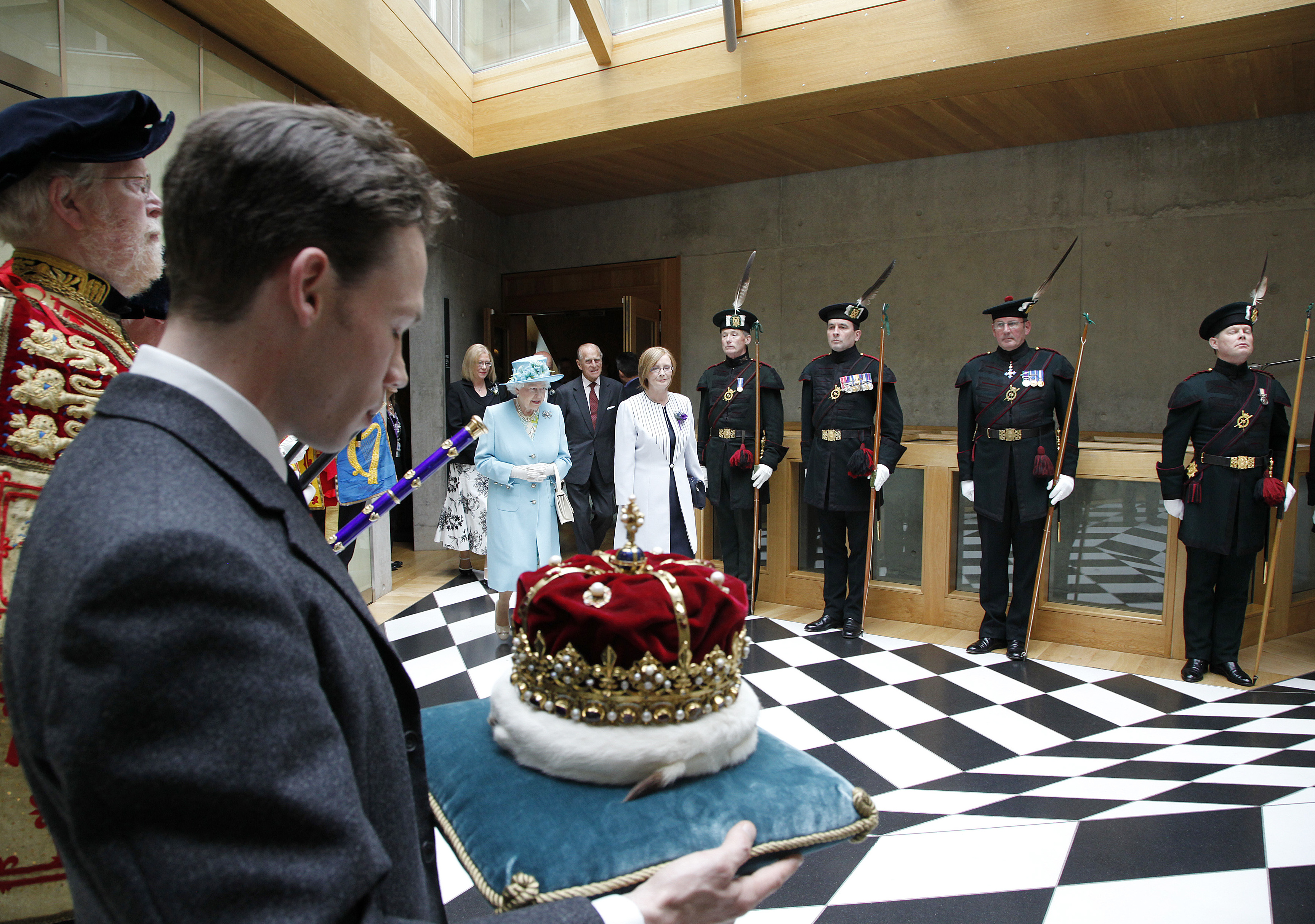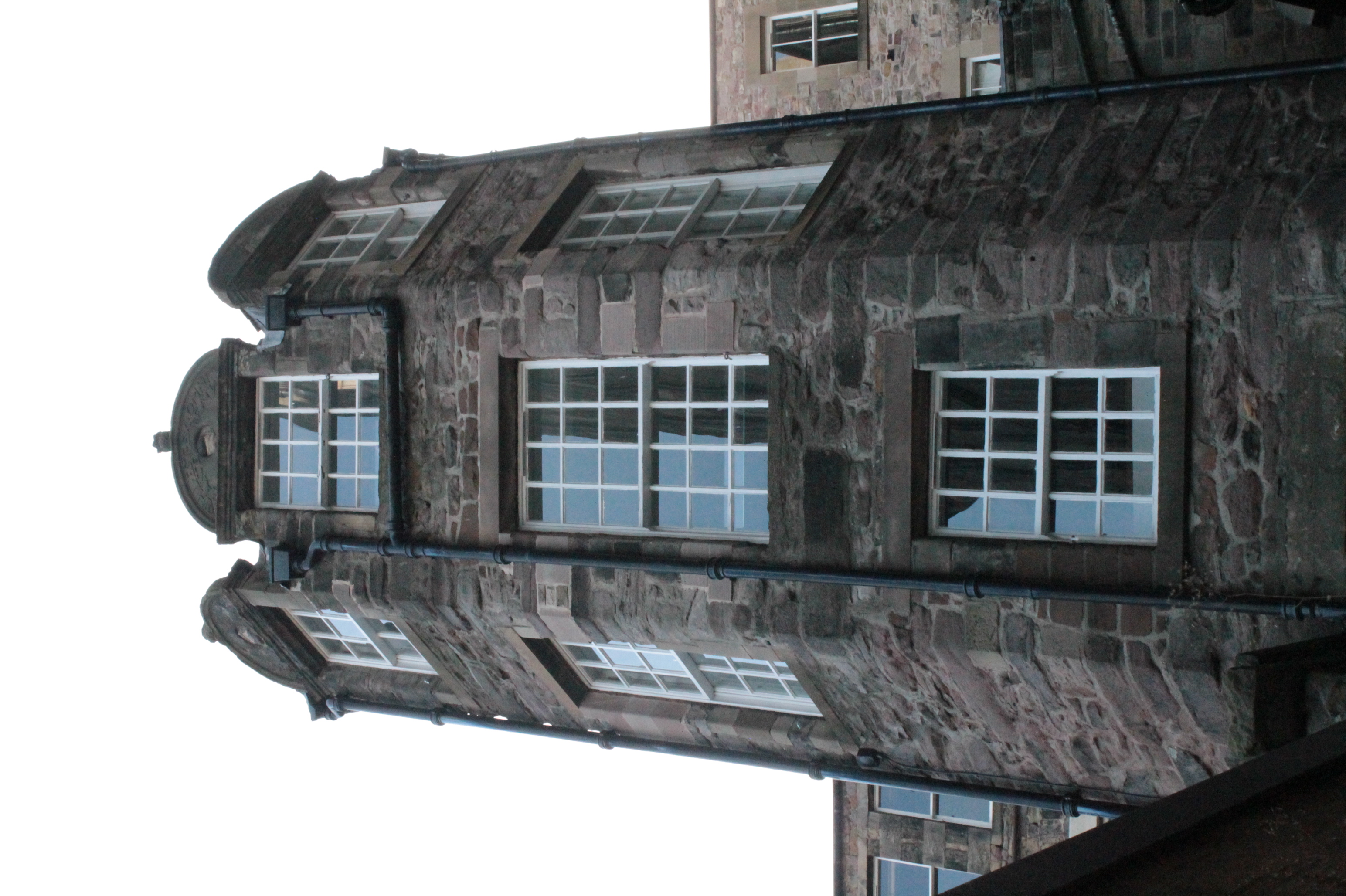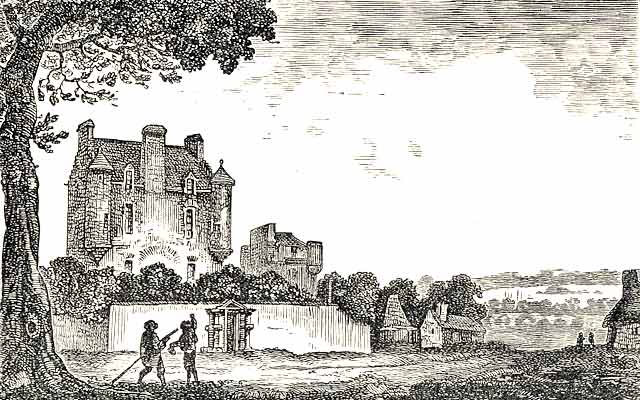|
Francis Bothwell
Francis Bothwell of Edinburgh, Lord of Session, was a Scottish merchant, landowner, judge and politician. As a university graduate, he was called ''Master Francis Bothwell'', or "Dominus" in Latin documents; however, this has been misunderstood by some writers, so he is occasionally, inaccurately, referred to as "Sir" Francis Bothwell. Career The elder son of Richard Bothwell, a Provost of Edinburgh during the reign of James III, Francis served as Procurator (1513–14) of the Scottish Nation at the University of Orléans in France, and was appointed a Burgess of Edinburgh in 1515, and Provost of Edinburgh in 1525. Francis Bothwell was a Burgh Commissioner, for Edinburgh, in the parliaments of 1524, 1525, 1526, 1528, 1531, 1532 and 1535. He served as Lord Auditor of Causes, Lord of the Articles, and was one of the first Lords of Session when the College of Justice was founded on 27 May 1532. For his service in the first year of the Session, Francis was paid £133-6s-8d. ... [...More Info...] [...Related Items...] OR: [Wikipedia] [Google] [Baidu] |
Edinburgh
Edinburgh ( ; gd, Dùn Èideann ) is the capital city of Scotland and one of its 32 Council areas of Scotland, council areas. Historically part of the county of Midlothian (interchangeably Edinburghshire before 1921), it is located in Lothian on the southern shore of the Firth of Forth. Edinburgh is Scotland's List of towns and cities in Scotland by population, second-most populous city, after Glasgow, and the List of cities in the United Kingdom, seventh-most populous city in the United Kingdom. Recognised as the capital of Scotland since at least the 15th century, Edinburgh is the seat of the Scottish Government, the Scottish Parliament and the Courts of Scotland, highest courts in Scotland. The city's Holyrood Palace, Palace of Holyroodhouse is the official residence of the Monarchy of the United Kingdom, British monarchy in Scotland. The city has long been a centre of education, particularly in the fields of medicine, Scots law, Scottish law, literature, philosophy, the sc ... [...More Info...] [...Related Items...] OR: [Wikipedia] [Google] [Baidu] |
Crown Of Scotland
The Crown of Scotland ( gd, Crùn na h-Alba) is the crown that was used at the coronation of the monarchs of Scotland. It is the oldest surviving crown in the British Isles and dates from at least 1503, although it has been claimed that the circlet at its base incorporates the original circlet of gold that was worn by Robert the Bruce at his coronation in 1306. Remade in its current form for James V in 1540, the crown is the centrepiece of the Honours of Scotland. It was last used to crown Charles II in 1651, and since then it has been used at many major royal ceremonial events. The crown is made of solid gold and silver, and is decorated with 69 Scottish freshwater pearls and 43 gemstones. Stylised versions of the crown appear upon the version of the royal coat of arms of the United Kingdom used in Scotland and the Scottish Royal Cypher of Charles III. The Crown of Scotland is kept on public display in Edinburgh Castle. Manufacture The crown dates from at least 1503 when, ... [...More Info...] [...Related Items...] OR: [Wikipedia] [Google] [Baidu] |
Lawyers From Edinburgh
A lawyer is a person who Practice of law, practices law. The role of a lawyer varies greatly across different Jurisdiction, legal jurisdictions. A lawyer can be classified as an advocate, attorney at law, attorney, barrister, canonist, canon lawyer, civil law notary, counsel, counselor, solicitor, legal executive, or public servant — with each role having different functions and privileges. Working as a lawyer generally involves the practical application of abstract legal theories and knowledge to solve specific problems. Some lawyers also work primarily in advancing the interests of the law and legal profession. Terminology Different legal jurisdictions have different requirements in the determination of who is recognized as being a lawyer. As a result, the meaning of the term "lawyer" may vary from place to place. Some jurisdictions have two types of lawyers, barrister and solicitors, while others fuse the two. A barrister (also known as an advocate or counselor in some j ... [...More Info...] [...Related Items...] OR: [Wikipedia] [Google] [Baidu] |
Madeleine Of Valois
Madeleine of France or Madeleine of Valois (10 August 1520 – 7 July 1537) was a French princess who briefly became Queen of Scotland in 1537 as the first wife of King James V. The marriage was arranged in accordance with the Treaty of Rouen, and they were married at Notre-Dame de Paris in January 1537, despite French reservations over her failing health. Madeleine died in July 1537, only six months after the wedding and less than two months after arriving in Scotland, resulting in her nickname, the "Summer Queen". Early life Madeleine was born at the Château de Saint-Germain-en-Laye, France, the fifth child and third daughter of King Francis I of France and Claude, Duchess of Brittany, herself the eldest daughter of King Louis XII of France and Anne, Duchess of Brittany. She was frail from birth, and grew up in the warm and temperate Loire Valley region of France, rather than at Paris, as her father feared that the cold would destroy her delicate health. Together wit ... [...More Info...] [...Related Items...] OR: [Wikipedia] [Google] [Baidu] |
John Bothwell, Lord Holyroodhouse
John Bothwell of Auldhamer, Lord Holyroodhouse (c.1550–1609) was a 16th-century Scottish judge and Senator of the College of Justice residing at Holyrood House prior to it becoming a royal palace. Life He was born in Bothwell House in Edinburgh, the son of Bishop Adam Bothwell, a Lord of Session and bishop of Orkney. His mother was Margaret Murray, daughter of John Murray of Touchadam. His paternal uncle Richard Bothwell served as Provost of Edinburgh during the reign of Mary Queen of Scots. His grandfather Francis Bothwell had also been a Senator of the College of Justice since its foundation in 1532 and a Lord of Session in the Edinburgh courts. Francis was Provost of Edinburgh 1523/24. His aunt, Janet Bothwell, was mother of the mathematician, John Napier. In early life he was styled "John Bothwell of Alhammer". Being a favourite of King James VI he was made Abbot or Commendator of Holyrood Abbey from 1581. In July 1593 he was created a Senator of the College of ... [...More Info...] [...Related Items...] OR: [Wikipedia] [Google] [Baidu] |
Bishop Of Orkney
The Bishop of Orkney was the ecclesiastical head of the Diocese of Orkney, one of thirteen medieval bishoprics of Scotland. It included both Orkney and Shetland. It was based for almost all of its history at St Magnus Cathedral, Kirkwall. The bishopric appears to have been suffragan of the Archbishop of York (with intermittent control exercised by the Archbishop of Hamburg-Bremen) until the creation of the Archbishopric of Trondheim ('' Niðaros'') in 1152. Although Orkney itself did not unite with mainland Scotland until 1468, the Scottish kings and political community had been pushing for control of the islands for centuries. The see, however, remained under the nominal control of Trondheim until the creation of the Archbishopric of St Andrews in 1472, when it became for the first time an officially Scottish bishopric. The Bishopric's links with Rome ceased to exist after the Scottish Reformation. The bishopric continued, saving temporary abolition between 1638 and 1661, unde ... [...More Info...] [...Related Items...] OR: [Wikipedia] [Google] [Baidu] |
Adam Bothwell
Adam Bothwell, Lord of Session (c.1527, Edinburgh – 1593, Edinburgh), was a Scottish clergyman, judge, and politician. He served as Bishop of Orkney (1559), Commendator of Holyrood House (1570), Extraordinary Lord of Session (1563–4), and as an Ordinary Lord of Session (1565). He was also a Member of the Privy Council. Bothwell was a Commissioner to the marriage of Mary, Queen of Scots with Francis, the Dauphin of France. He later conducted the marriage of Mary to the Earl of Bothwell (1567), crowned the infant James VI (1567), and accompanied the Regent Moray to the Conference of York and Westminster in 1568. Bothwell converted to Protestantism at the Reformation. He was briefly imprisoned at Stirling Castle in 1578. He held charters of the baronies of Alhammer or Whitekirk (1587–8) and Brighouse, in the Sheriffdom of Linlithgow (1592). He is interred at Holyrood Abbey. Life Bothwell was the son of Francis Bothwell, Lord of Session. His mother, according to s ... [...More Info...] [...Related Items...] OR: [Wikipedia] [Google] [Baidu] |
Mary, Queen Of Scots
Mary, Queen of Scots (8 December 1542 – 8 February 1587), also known as Mary Stuart or Mary I of Scotland, was Queen of Scotland from 14 December 1542 until her forced abdication in 1567. The only surviving legitimate child of James V of Scotland, Mary was six days old when her father died and she inherited the throne. During her childhood, Scotland was governed by regents, first by the heir to the throne, James Hamilton, Earl of Arran, and then by her mother, Mary of Guise. In 1548, she was betrothed to Francis, the Dauphin of France, and was sent to be brought up in France, where she would be safe from invading English forces during the Rough Wooing. Mary married Francis in 1558, becoming queen consort of France from his accession in 1559 until his death in December 1560. Widowed, Mary returned to Scotland in August 1561. Following the Scottish Reformation, the tense religious and political climate that Mary encountered on her return to Scotland was further agitated by pro ... [...More Info...] [...Related Items...] OR: [Wikipedia] [Google] [Baidu] |
John Napier
John Napier of Merchiston (; 1 February 1550 – 4 April 1617), nicknamed Marvellous Merchiston, was a Scottish landowner known as a mathematician, physicist, and astronomer. He was the 8th Laird of Merchiston. His Latinized name was Ioannes Neper. John Napier is best known as the discoverer of logarithms. He also invented the so-called "Napier's bones" and made common the use of the decimal point in arithmetic and mathematics. Napier's birthplace, Merchiston Tower in Edinburgh, is now part of the facilities of Edinburgh Napier University. There is a memorial to him at St Cuthbert's at the west side of Edinburgh. Life Napier's father was Sir Archibald Napier of Merchiston Castle, and his mother was Janet Bothwell, daughter of the politician and judge Francis Bothwell, and a sister of Adam Bothwell who became the Bishop of Orkney. Archibald Napier was 16 years old when John Napier was born. There are no records of Napier's early education, but many believe that he was ... [...More Info...] [...Related Items...] OR: [Wikipedia] [Google] [Baidu] |
Merchiston Castle
Merchiston Tower, also known as Merchiston Castle, was probably built by Alexander Napier, the 2nd Laird of Merchiston around 1454. It serves as the seat for Clan Napier. It was the home of John Napier, the 8th Laird of Merchiston and the inventor of logarithms, who was born there in 1550. The tower stands at the centre of Edinburgh Napier University's Merchiston campus. History The lands surrounding the castle were acquired before 1438 by Alexander Napier (1st Laird of Merchiston), and remained in the Napier family for most of the following five centuries. Merchiston Castle was probably built as a country house, but its strategic position and the turbulent political situation required it to be heavily fortified – with some walls as much as six feet thick – and it was frequently under siege. During restoration in the 1960s, a 26-pound cannonball was found embedded in the Tower, thought to date from the struggle in 1572 between Mary, Queen of Scots, and supporters of her ... [...More Info...] [...Related Items...] OR: [Wikipedia] [Google] [Baidu] |
Archibald Napier (landowner)
Sir Archibald Napier (1534 – 15 May 1608) was a Scottish landowner and official, master of the Scottish mint and seventh Laird of Merchiston. Early life He was eldest son of Alexander Napier, sixth of Merchiston, who was killed at the battle of Pinkie in 1547. His mother was Annabella, youngest daughter of Sir Duncan Campbell of Glenurchy. His paternal grandfather was Alexander Napier, fifth of Merchiston, who was killed at the battle of Flodden in 1513. Archibald was infeft in the barony of Edenbellie as heir to his father on 8 November 1548, a royal dispensation enabling him, though a minor, to feudalise his right to his paternal barony in contemplation of his marriage with Janet Bothwell, which took place about 1549. Napier began to clear his property of encumbrances. On 1 June 1555 he redeemed his lands of Gartnes, Stirlingshire, and others from Duncan Forester, and on 14 June 1558 he obtained a precept of sasine for infefting him in the lands of Blairwaddis, Isle ... [...More Info...] [...Related Items...] OR: [Wikipedia] [Google] [Baidu] |
Broughton, Scottish Borders
Broughton is a village in Tweeddale in the historical county of Peeblesshire in the Scottish Borders council area, in the south of Scotland, in the civil parish of Broughton, Glenholm and Kilbucho and Upper Tweed Community Council. Broughton is on the Biggar Water, near where it flows into the River Tweed. It is about 7 km east of Biggar, and 15 km west of Peebles. The village has a post office, village store, tea room/bistro, bowling green, tennis courts, a village hall, a petrol station and a garage. Since 1979, the village has been home to Broughton Ales, Scotland's original independent brewery. Culture The village is best known as the one-time home of John Buchan. The Biggar Museum Trust runs a museum dedicated to his life in Peebles, moving it from its original home in Broughton. The Museum moved to Biggar, five miles west of Broughton, and is now known as the Biggar and Upper Clydesdale Museum. Broughton is also home to Broughton Place, a private house built ... [...More Info...] [...Related Items...] OR: [Wikipedia] [Google] [Baidu] |



.jpg)





